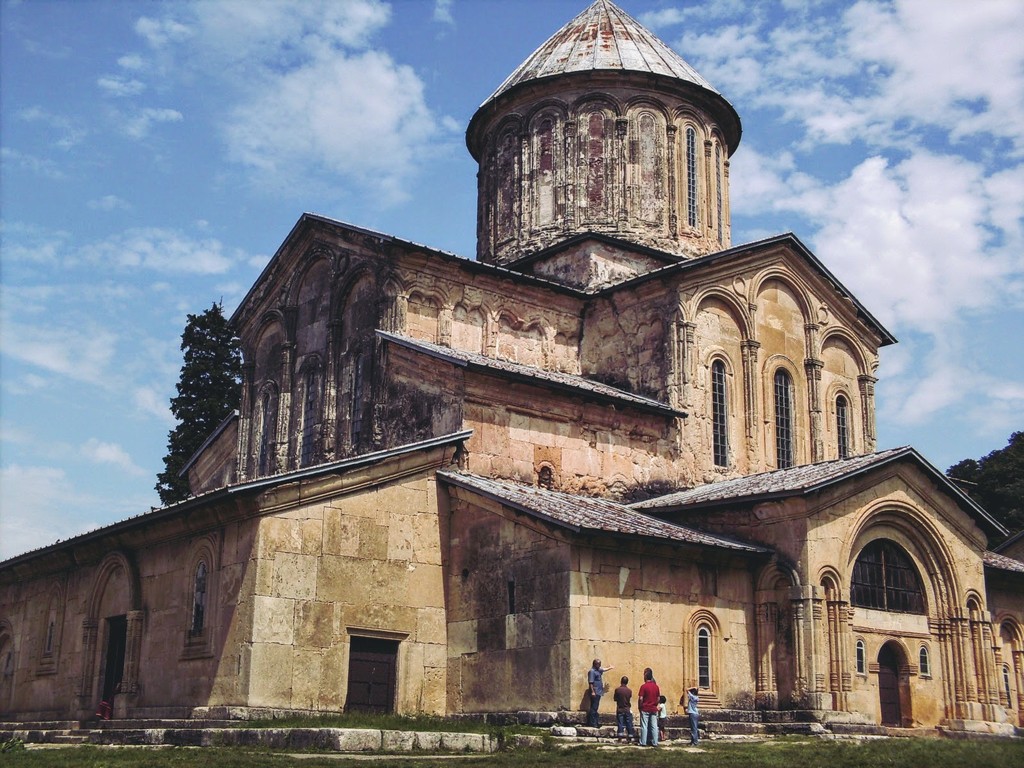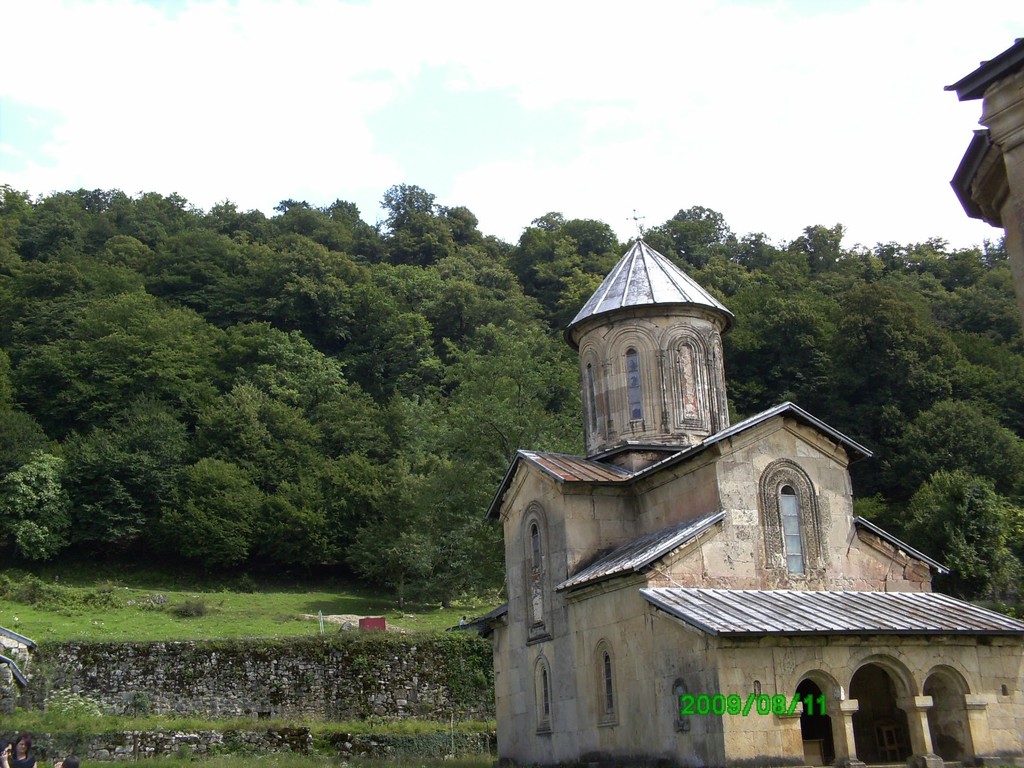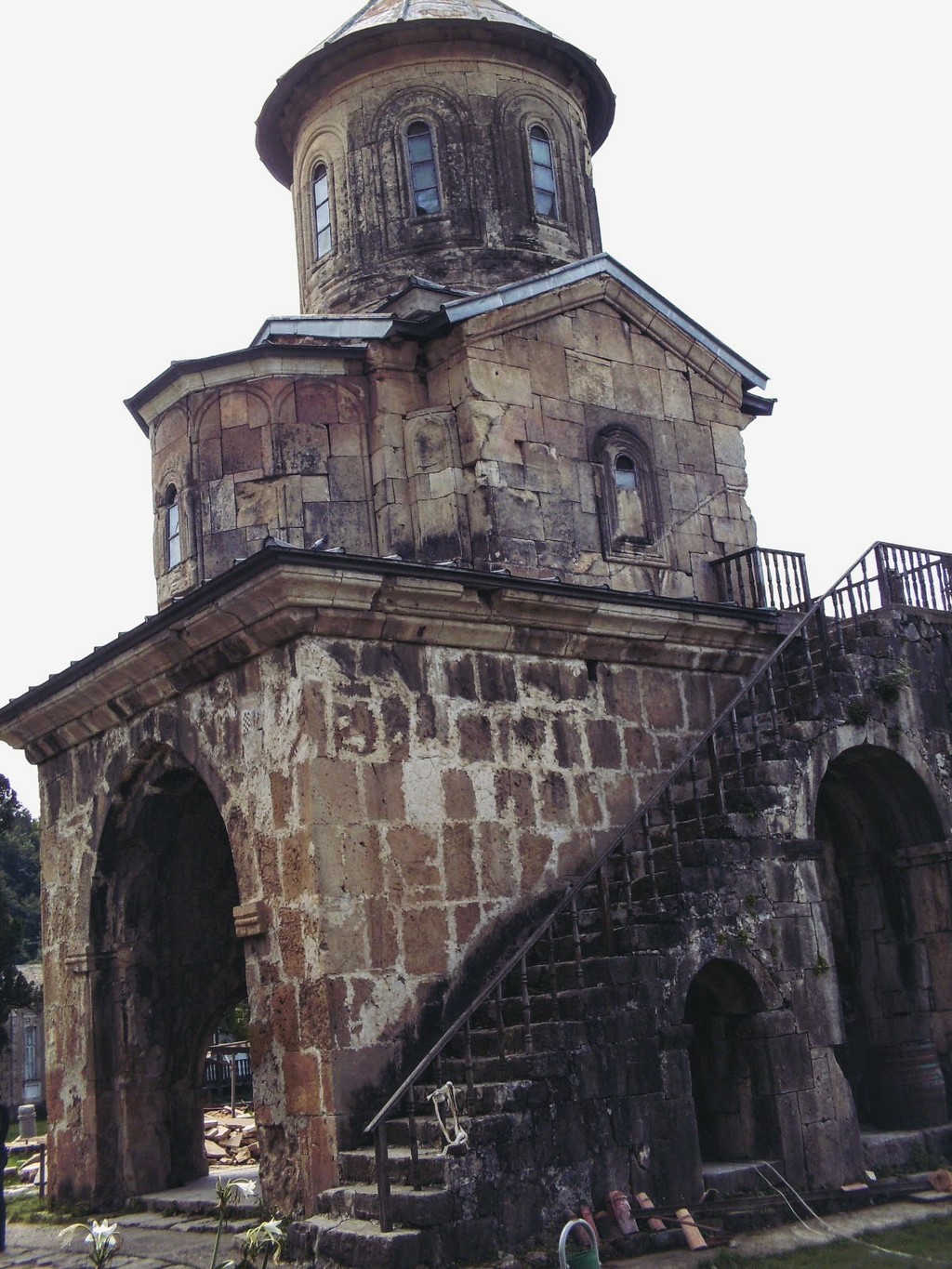Gelati Monastery
Like Bagrati Cathedral that I wrote a blog about, Gelati Monastery is a symbol of the Kingdom of Georgia, and, to my mind, this is a must-see place when visiting Georgia. This is a monastery, which represents those ages of Georgia, when it was in its peak of greatness and everything. It was in the 12th century and it was mainly during the reign of the King David the 4th "The Builder". These ages are considered as the Golden Ages of Georgia.

It was 2009 when I first visited Gelati Monastery, and I still remember that amazing feeling that I felt then. It was something fascinating to see all these stones and buildings and stuff built in the 11-12-the centuries and that was really surprising, that I finally could see them with my own eyes and I could even touch them and feel the history. This is crazy! I was really thankful to my parents who took us there and let us see the history. Well, we always learned in many subjects at school, that King David the Builder was the greatest king of all Georgian history and, I know now that his strategies and tactics are taught in the USA army academies and stuff like that, and he defeated the Seljuks, those great warriors and large empire, and I really wondered what Gelati Monastery looked like when seeing “in person”, and there I was, looking at all these buildings with a huge amazement and I just loved it there. Imagine how people would feel in those centuries when it was built! It would have been this amazing complex that people would just stare for hours and they might not even move with fascination.
The Gelati Monastery was built in 1106 by King David the 4th of Georgia and, as I've mentioned in the blog about Bagrati Cathedral, the Gelati Monastery along with the cathedral was recognised by UNESCO as a World Heritage Site in 1994.

Gelati Monastery is located in the northeast from Kutaisi, about 11 kilometres far from it, in a valley of the river Tskaltsitela. It is surrounded by a wall or a fence, and it consists of several buildings, which were built mainly in the 12th and the 13-th centuries.
Gelati was not just a monastery. It was an academy, where Georgian people studied and it employed some of the most great Georgian scientists, theologians and philosophers. Many of them had been actively living abroad in various orthodox monasteries, such as the Mangana Monastery in Constantinople. One of the scientists were Ioane Petritsi and another one was Arsen Ikaltoeli. Ioane was a Georgian Neoplatonist philosopher of those ages and he lived in the Byzantine empire, until King David asked him to come back to Georgia and teach at the Gelati Academy. Till that, he was in Petritsoni monastery in Bulgaria, and so that’s why his name was Petritsi, you see. His works have had a great influence on Georgian philosophy and his philosophic thoughts became more prominent especially in the 18th century under Catholics Anton the 1st. And Arsen Ikaltoeli or Arsen of Ikalto was a Georgian churchman, calligrapher and religious author in the 11th and the 12th centuries. He is canonized by the Georgian Orthodox Church, and it commemorates him on February 6. He has composed the King David’s epitaph.
And because the academy was a blessing in disguise for many Georgian people, they called it “a new Hellas” and “a second Athos”.
The legend
There is a legend, that King David participated in the building process of Gelati Monastery. They say, he carried two huge stones all the way from the river valley to the church himself without any help. Well, he sure was a tall and big man and he was very strong, too, as he wouldn’t have won all the battles against enemies. And as you know, people carried such big and heavy swords those days, that people can’t even hold them now for a long time, not to mention to fight against someone with them. One of the things people say is that Queen Tamar is buried there in Gelati Monastery. There is a legend that connects a building on the south-east of the church to Queen Tamar. There was held church services for Queen Tamar once a year there. According to chronicler, Tamar was buried there, “in a new Gelati Monastery”.
The architecture
The monastery complex itself includes some buildings. There is the main church: Virgin Mary’s Church, St. George’s Church, St. Nicholas’s Church, the bell tower, the academy and the stone wall surrounding all these buildings.
The architecture of Gelati Monastery is complex and diverse. The territory is enclosed by a stone wall and there is the main church Virgin Mary’s church in the middle of it. On the east of the main church there is the 12th century St. George’s Church. It mainly resembles the main church, but is smaller in size and the walls from inside are covered with the 16th century paintings. In 9 metres from the main church there is a 13th and 14th centuries St. Nicholas’s two-stored church. The bottom floor is surrounded by open arches and the second floor is cross-shaped and is a smaller church. There is the bell tower on the north-west from the main church, it was built in the 13th century. There are monks’ residences, misericords and other buildings along the stone wall, where there has been water thorough the pipes. There is also the academy building in the monastery complex, but now it’s just its remains, not the whole building. Historically, it had three entrances and then in the Middle Ages, there has been a splendidly decorated gate added to it. There have been stone seats along the walls and large windows, which made it possible the inside of it to be well-lit, and the walls have been painted with stuff.
Well, first of all, we came to Kutaisi _ this is a city in Georgia, if you don’t know. It was a capital of Georgia once. It’s really large city, and its symbols are Bagrati Cathedral and Gelati Monastery, so I was very surprised, that when we stopped people in Kutaisi center and asked them where Gelati Monastery was and how we could get there, they just answered some things, some silly things, or they just said that they didn’t know. Now, how can you not know how to get to the place that is in your own city and that is the main attraction to tourists, not to mention that the city residents often go there.
So, it was some time till we found the right person, who knew how to get to Gelati Monastery. He told us exactly how to get there and we were on our way to this amazing complex. I was really excited, if you want to know the truth. I just love visiting those historical sites and kind of feel the history. If you haven’t tried that, you should do it some time! Trust me, you will find it awesome and something unimaginable. Now, we came to Gelati Monastery. You have to get inside the stone wall that surrounds the complex. When you enter it, this amazing view just is laid in front of you.
St. George’s Church
St. George’s Church is situated on the east of the main church. It was built in the 14th century. And if you are a historian or an architect or just someone who knows Georgian history and architectural styles during its history, you will see, that the plan and the decorations of this church match the traditions of the 14th century era. There is a pretty interesting thing here, this interesting decision about the pillars of the dome, those are round pillars with decorations. There is a three-span floor in the church and it separates the alter from the other places of the church. An inscription on the western wall of the church reads, that Evdemon Chkhetidze, the bishop of the West Georgia had people paint the walls of St. George’s Church in the 16th century. The bishop himself is painted on the southern wall beside the King Bagrat the 3rd of Imereti and his wife.
Besides that, there are other historical figures painted on the walls, too. However, you will find paintings of religious content mostly on the main parts of the walls. The façade of the church doesn’t have a decor, but its framed with a beautiful bold ornaments. There is a remains of a wonderfully made painting on the southern part of the western gate. Now, imagine, how wonderful it would be some centuries ago when it was new and fresh!

St. Nicholas’s Church
St. Nicholas’s Church is a two-stored building on the west of the main church. There is an arched exit on the first floor. The eastern and western arches are higher, than the northern and southern ones. This is some kind of a floor on which there is a small church built and it kind of resembles a cross, it’s like a church of a cross-type. The frames on the window and the door are without any ornaments, and the first floor is connected to the second floor by a stone staircase.

The bell tower
The bell tower is a three-stored building. The two stores were built in the 12-th century along with the monastery, and the third floor was built later, in the 14th century. This third floor is kind of an open thing _ it mostly has these windows and stuff, and is domed with a perfectly circular dome that sits on this building very firmly, I could say, and is really simple and beautiful. There are water pipes on the first floor. And, according to the historical records, there have been all this pipes and stuff providing water in every place there in the monastery since it was built.
The academy building
The academy building is situated west from the monastery on a rough precipice. The entrance is a splendidly decorated with a four-columned gate with beautifully embossed arches, which stand on four pillars. There is a lion carved on one of the pillars. The gate itself is connected to a huge hall. The building is square in a shape and its length is 25 metres and the width is 10 metres. It has been covered with a roof long time ago. There are stone seats along with the walls, and these seats were used by the academy listeners. On the north-west of the hall, there is a arched square table near the middle wall. And the good lighting conditions are reached by the window that is on the side of the Red river valley.
On the south part of the monastery, in the main entrance, there is King David’s grave. Well, there are mostly all the kings of Georgia buried:
- Demetrius I of Georgia
- David IV of Georgia
- Solomon I of Imereti
- Solomon II of Imereti
- George III of Georgia
- Vakhtang II of Georgia
- Bagrat VI of Georgia
- George V of Georgia
- Alexander II of Imereti
- George of Chqondidi
So, King David’s grave is there in Gelati Monastery. King David is buried on the south part from the Virgin Mary’s Church. The grave is a separate building, a small church, which has been a gate of the monastery, too. The gravestone is located in such a place, that one has to walk over it to enter the gate. It’s said, that King David especially chose that place to show his modesty. There is a quote from psalm engraved on his gravestone, that says that it is his grave for forever. The building is long and it has two arched entrances on each end of the building. One of the entrances, the one that comes from a village there, is now not functioning, and has been like that since 1840's. There has been an iron door on the gate, and there is a legend about that.
The legend has it, that when King Demetre the 1st, son of King David the Builder, in 1138-1139 years went to Ganja and besieged it and defeated it, he took its gate, this iron gate and brought it back to Kutaisi. There is an inscription on the door telling this story about taking this door from Ganja to Kutaisi and how Demetre the 1-st defeated Ganja and stuff. What is left from that door is just one piece of it (one door out of two). There is engraved a name of the master who made that door and the date, too, it was 1063 when they made the door. And all this is in Arabic language. The other piece of the door has been destroyed in the 18th century. Well, technically, it has not been destroyed, but was used to make nails and stuff, and there are only some damaged pieces of it remained.
Photo gallery
Content available in other languages
- Español: Monasterio de Gelati
Want to have your own Erasmus blog?
If you are experiencing living abroad, you're an avid traveller or want to promote the city where you live... create your own blog and share your adventures!
I want to create my Erasmus blog! →










Comments (1 comments)
This is a very good article and really interesting. Great job!